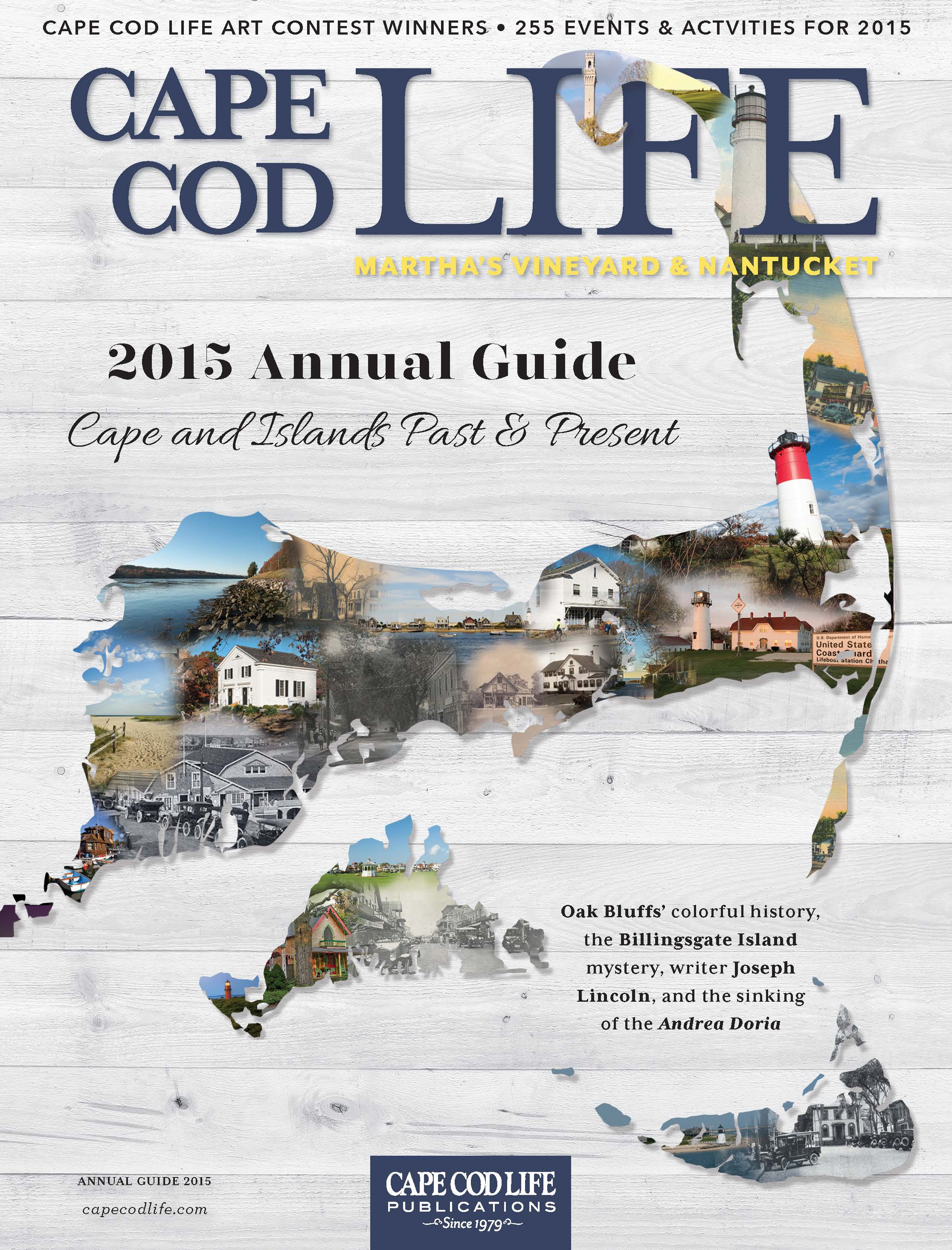
From Canvas to Gingerbread
Cape Cod Life / Annual Life 2015 / Art & Entertainment, History, Recreation & Activities
Writer: Ellen Albanese
From Canvas to Gingerbread

Cape Cod Life / Annual Life 2015 / Art & Entertainment, History, Recreation & Activities
Writer: Ellen Albanese
The sweet history of a Martha’s Vineyard neighborhood.
Step into the historic “campground” in the Martha’s Vineyard town of Oak Bluffs, and the bustle and glitz of this resort island fall away. In season, tourists amble along the shaded paths, ogling the famous “gingerbread cottages;” residents chat with their neighbors on cozy porches; the iron tabernacle in the village center buzzes with activity. But even after the season, when most of the cottages are boarded up and the museum is closed and the tabernacle is tethered with guy wires, there is a sense of community here, a sense of harmony, a sense that something is shared in this place.
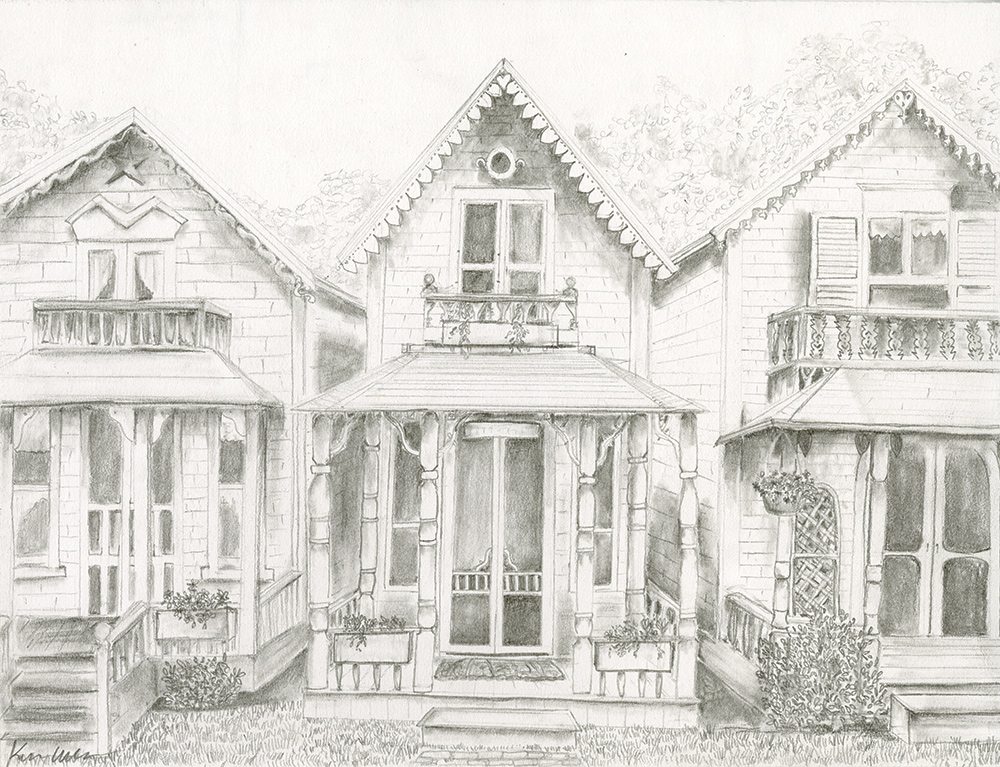
Painted by: Kyra Wells
The “gingerbread cottages,” so named for their decorative architectural trimmings, or gingerbread, are a legacy of a community that took hold on the island during the Second Great Awakening, a time of great religious fervor that swept across the country in the early 1800s.
On Martha’s Vineyard, Jeremiah Pease and six men from Edgartown—all Methodists—organized a camp-meeting during the summer of 1835 in a grove of oaks on a sheep pasture a few miles outside Edgartown center. The six-day meeting began on August 24, and the proceedings were serious business: participants pitched tents and slept on straw; smoking, drinking, and card playing were prohibited; and religious services were held three times a day, with additional prayer meetings and hymn singing scheduled.
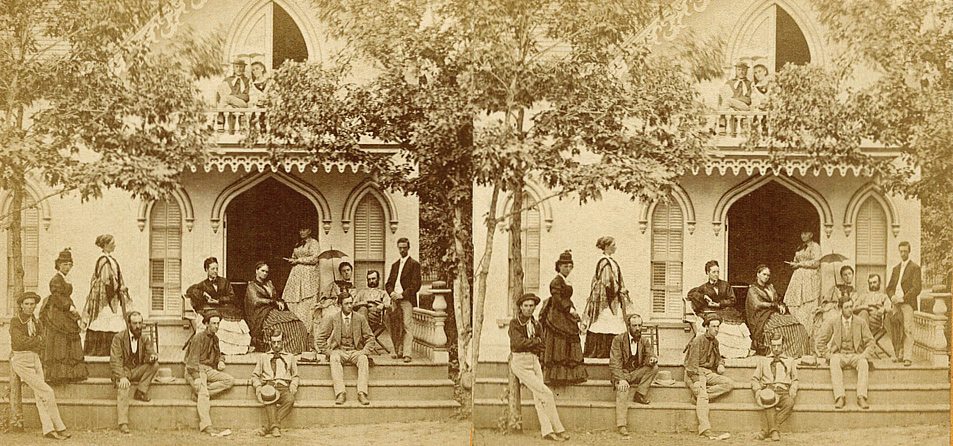
Photo Courtesy of: Doug Ulwick
During the 150 years that followed, much would change at the Methodist campground: the tents would give way to cottages built in an entirely new architectural style; the preachers’ wooden platforms would be replaced by a unique iron tabernacle—still in use today; and the exclusive focus on religion would expand to include recreation and other aspects of community life. And Wesleyan Grove, the home of the Martha’s Vineyard Camp-Meeting Association (MVCMA), would become a tourist attraction and listed on the National Register of Historic Places for its unique architecture, remarkable state of preservation, and importance as a shining example of a 19th-century religious retreat.
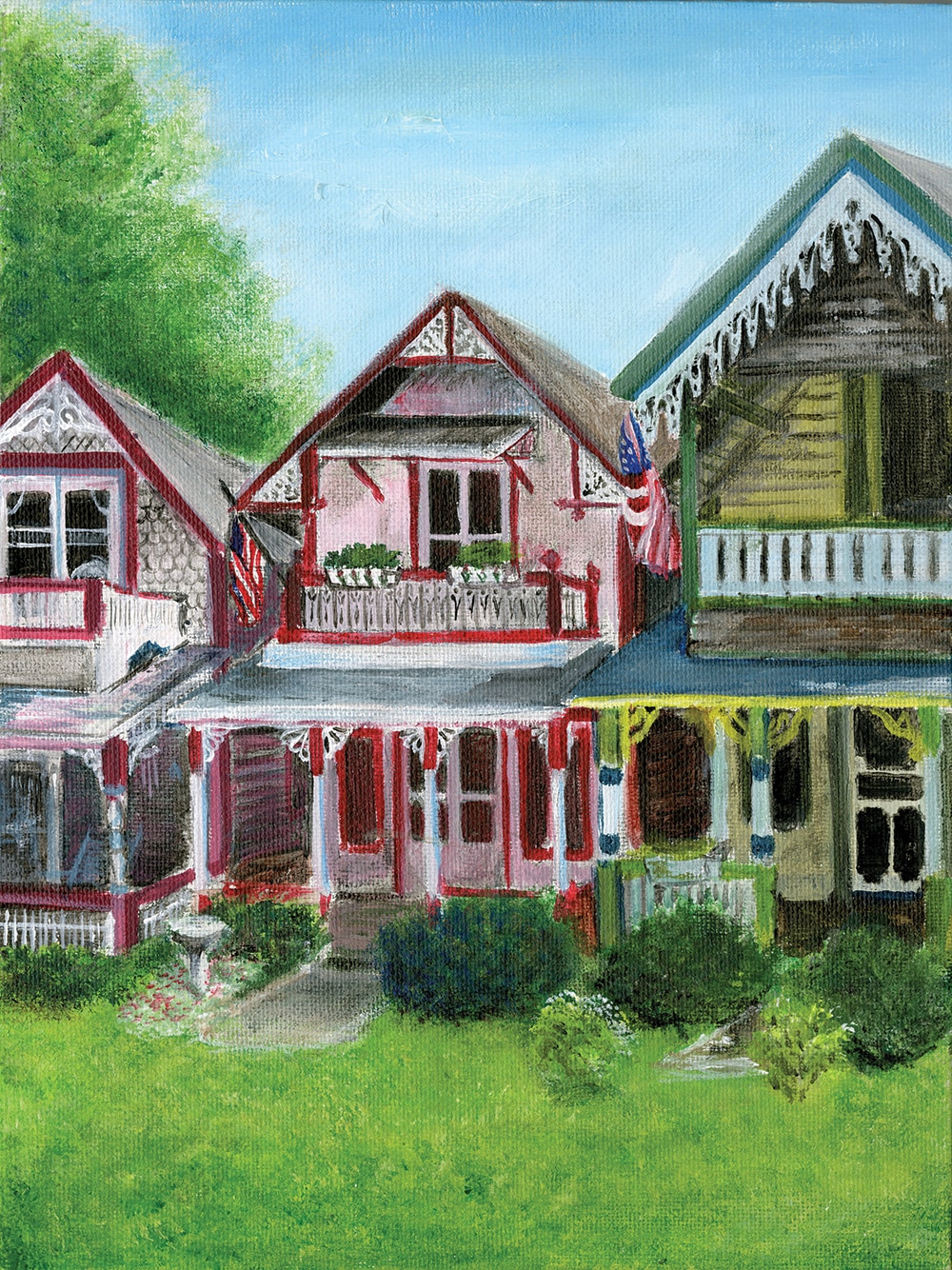
Painted by: Tammi Gans
After the first camp-meeting, news of the Vineyard site’s virtues—including a convenient landing, a shady grove, and abundant water—spread quickly. By 1837, the one-week August encampment featured 12 “society tents” representing specific Methodist churches on the island and the mainland, one or two boarding tents, 17 preachers, and 2,000 attendees, says Sally Dagnall in her history, Circle of Faith: The Story of the Martha’s Vineyard Camp-Meeting (2010). Dagnall and her husband, Russell, own two homes in the campground neighborhood, and their family connections to the area date to the early 1900s. In her book, Dagnall writes that by 1848, the camp-meeting had grown to 64 tents, and attendance at Sunday services approached 3,000. Since many families returned year after year, the gatherings began to take on a social function as well as a religious one.
The tents, meanwhile, were becoming larger and more ornate. Old photographs show many with draped and scalloped flaps, as well as wide canvas overhangs, which allowed family members to sit outside while remaining protected from the elements—an obvious precursor of the porches that are such a prominent feature of the cottages today.
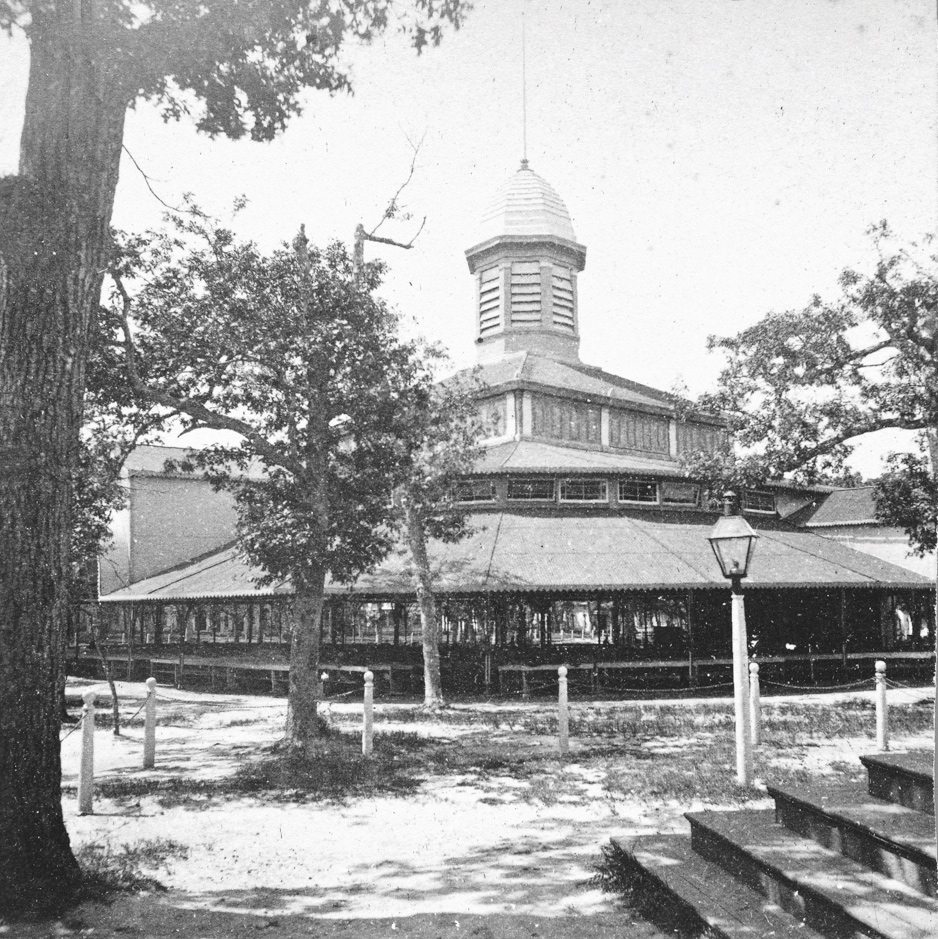
Photo Courtesy of: Doug Ulwick
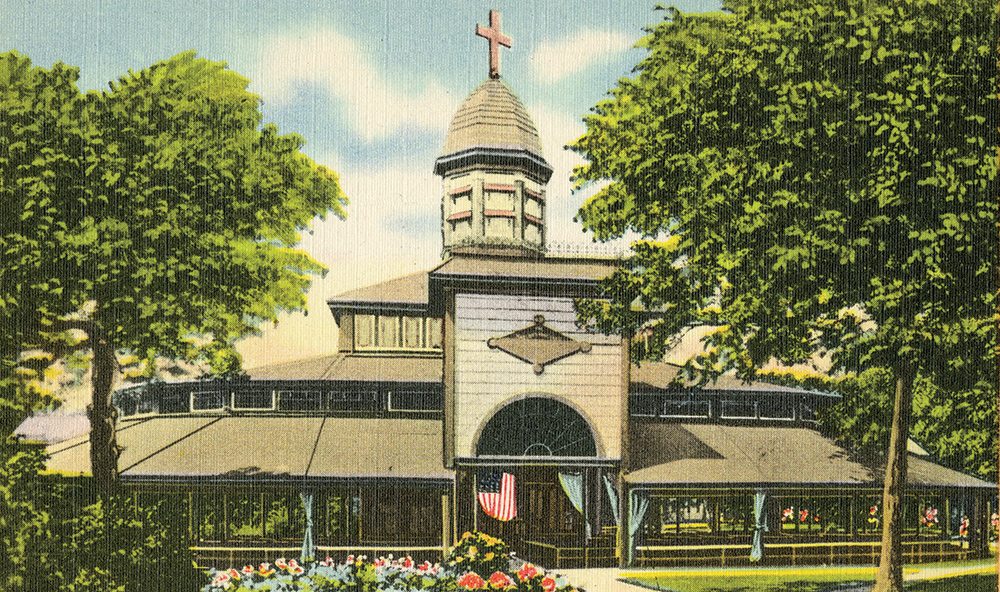
Photo Courtesy of: Doug Ulwick
In 1859, the association constructed a building for offices and storage, launching a 26-year building boom. The association also bought the camp-meeting property, convened an organization of laymen to oversee business affairs, and adopted the official name: Martha’s Vineyard Camp-Meeting Association.
For the most part, cottages replaced tents; like the tents, they were small and laid out close together. Some were built directly on the wooden tent platforms. Local carpenters produced the distinctive filigree, and the cottages’ unique style came to be called Carpenter Gothic. In Unbroken Circles: The Campground of Martha’s Vineyard (2000), Mary-Jean Miner describes the style as follows: “The houses look like tiny little churches. Windows feature pointed or round arches, and the main entrance is usually a double door of similar style, opening inward. The cottages are embellished with unique jigsaw decorations of almost endless variety.”
At one point, the campground held more than 600 cottages; today, there are 314. The original cottages had one or two bedrooms, and over the years some were combined to create larger dwellings. Others were moved, and some fell into disrepair and were torn down. Residents own the cottages and lease the lots they are built on from the association.
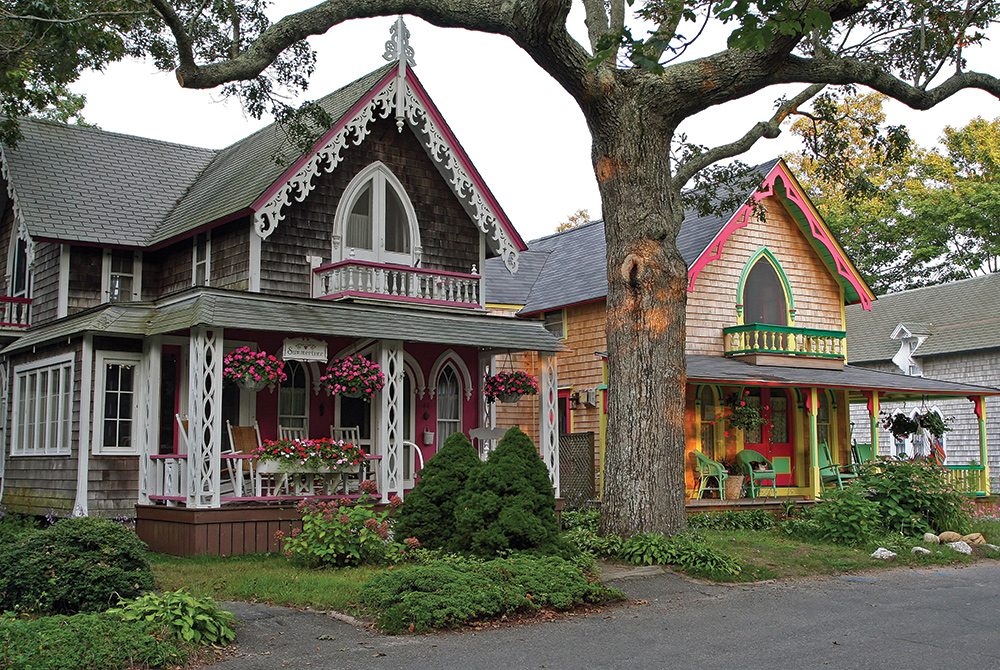
Photo Courtesy of: Doug Ulwick
Jody Graichen, a historic preservation consultant from Athens, Georgia, who spoke at the campground last summer, is impressed by how well the cottages have survived. “It’s remarkable that so many of the cottages are still there and have maintained so much historic integrity,” she says. Graichen attributes their longevity to the fact that most are family owned and have been passed down through many generations.
After the Civil War, the association purchased land to expand the camp-meeting site to 35 acres, roughly the property’s size today. With many families spending the entire month of August at the campground, an assortment of services sprang up, including barbershops, bakeries, tailors, drugstores, and furniture vendors. Boarding houses catered to increasing numbers of visitors who didn’t have their own tents or cottages. Two of these—Attleboro House and Wesley House (now the Wesley Hotel)—are still in business today.
In her book, Dagnall notes that one, time-honored tradition long associated with the campground actually began as a way to promote the burgeoning seaside resort beyond the campground’s boundaries. In 1869, the Oak Bluffs Land and Wharf Company, developers of homes and cottages outside the campground staged an illumination with decorative lanterns lighting new cottages, a brass band concert, and fireworks. Later, Illumination Night became part of the closing ceremonies of the annual camp-meeting. Today, Grand Illumination Night is usually held on the third Wednesday evening in August; this year, it is scheduled for August 19. As in the early days, the event includes a band concert, singing, and colorful Oriental lanterns decorating the cottages.
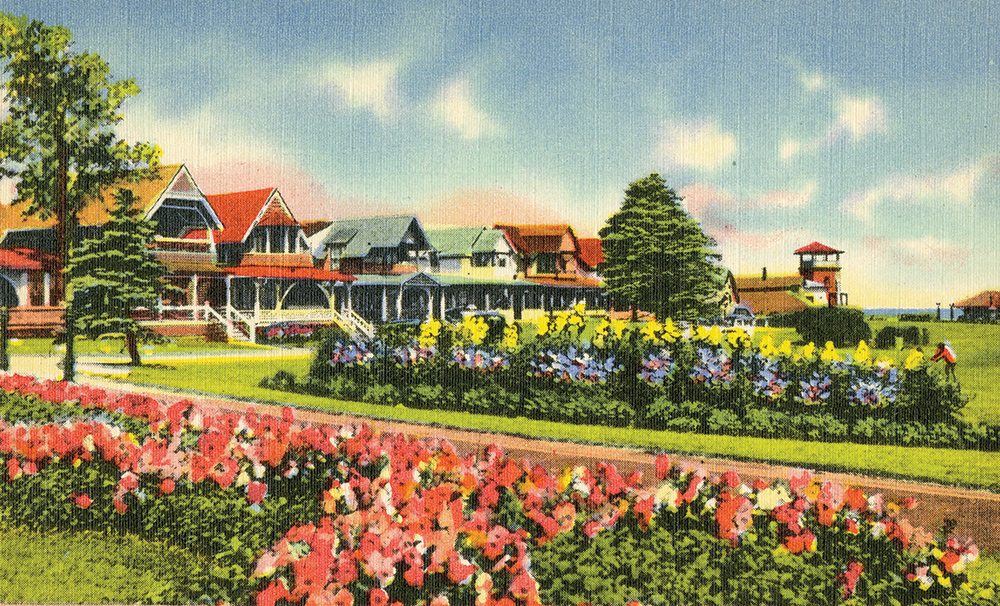
Photo Courtesy of: Doug Ulwick
The most visible landmark on the property is the iron tabernacle, an architectural and engineering marvel and the largest covered venue on the island. In 1879, the association budgeted $7,200 to build a wooden tabernacle to replace its worn canvas worship structure. When it turned out that a wooden structure would cost a minimum of $10,000, Dagnall says the association turned to J.W. Hoyt, a camp-meeting attendee affiliated with an iron construction company in Springfield, Massachusetts who said his company could build an iron tabernacle for $6,200; the association accepted.
From the outside, the tabernacle appears oval, but looking up to the rafters from inside reveals it is actually a square structure consisting of four main trusses. Sun shines through stained-glass clerestory windows, throwing bands of color across the benches and floor. With seating for up to 2,500 people, the tabernacle is now used for non-denominational religious services as well as musical and other cultural activities. In 2000, it was declared a federal “Save America’s Treasures” OVA project.
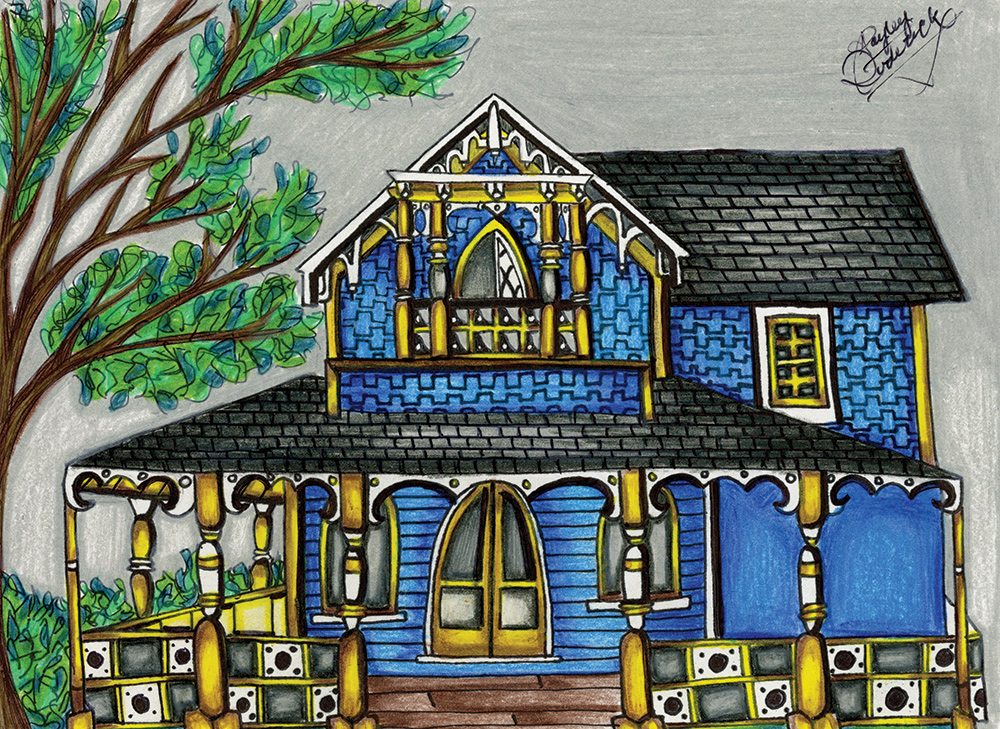
Painted by: Hayley Roderick
The campground has seen its share of distinguished visitors over the years. President Ulysses S. Grant stayed at the Bishop Haven Cottage in 1874. The story goes that Grant got locked out when he stepped off the property to enjoy a cigar and brandy—at the time, the entire campground was enclosed by a high fence and was locked up promptly at 10 p.m. President Bill Clinton and Hillary Rodham Clinton attended services at the tabernacle in 1993.
Today, visitors are welcome to stroll the campground and enjoy the cottages’ unique architecture. The association offers guided tours on Tuesday and Thursday mornings in July and August. Guides such as Jodie Falkenburg, who has been visiting the campground for more than 50 years and now lives there year round, point out interesting and whimsical details: semicircle flourishes over windows are called “eyebrows,” Falkenburg says, and a line of lacy filigree that peeks out from under a porch roof is known as a “petticoat.” The Cottage Museum offers exhibits on daily life across the decades, from period wedding dresses, to toys, to a program from Illumination Night 1883.
Beyond its eye-candy architecture, the campground is still a place apart, distinguished by a slower pace, a neighborly feeling, and an air of history shared. “The sense of community is the thing that has probably changed the least,” says Dagnall, speaking from her winter home in Ohio. “When you come back, it’s like you were never away.”



